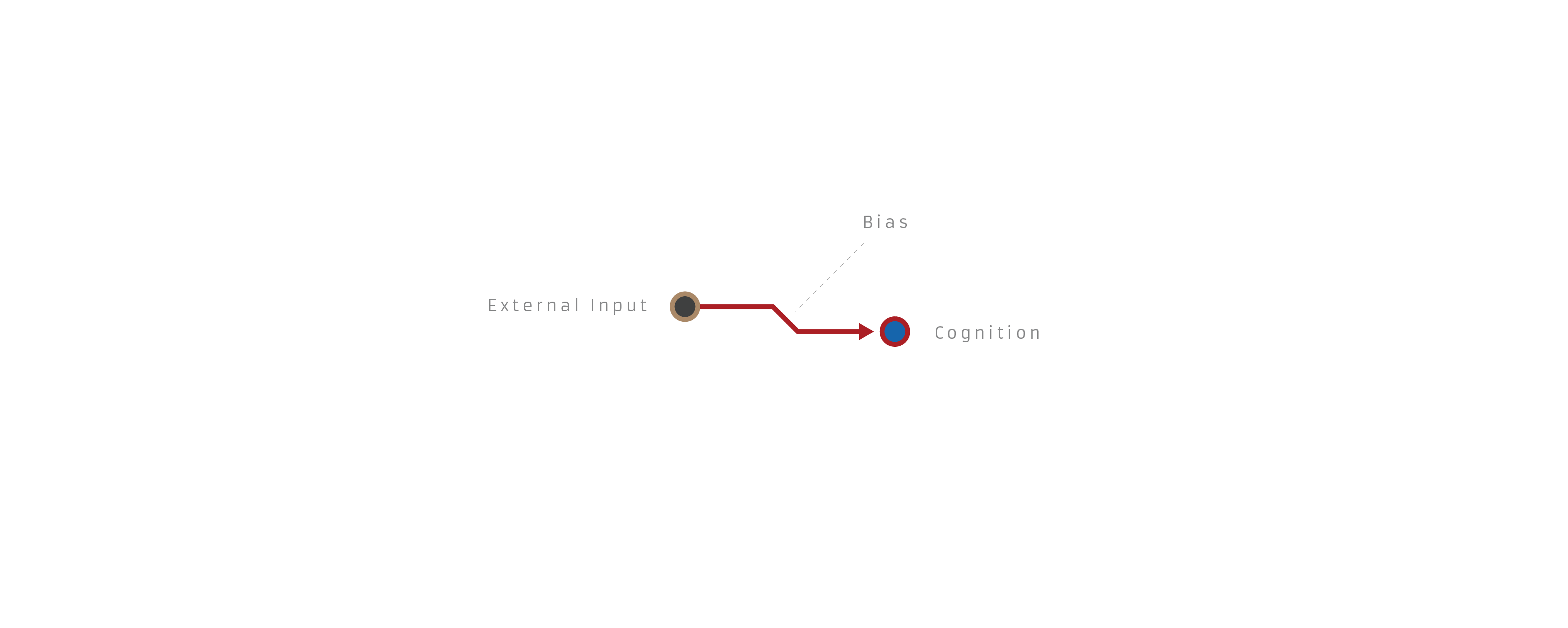I have started using a visual metaphor to diagram biases in my attempts to remove and mitigate them in myself. I have found this to be incredibly useful, particularly when dealing with multiple compounding biases.
I view an inference as an interaction between external inputs/premises and the resulting cognitions/conclusions. It can be read either as "if x then y," or "x therefore y." A basic inference looks like this:

A biased inference looks like this:

This is obviously a simplification of complex cognitive shit, but it's meant to be more of a functional interface than any kind of theory.
So to run through a few example biases, the fallacy of the undistributed middle:

The planning fallacy:

Planning fallacy corrected:

A little awkward, but it can capture basic failures in Bayesian reasoning as well:

Bayesian reasoning corrected:

And an example of compounding biases resulting in a distorted worldview:

I'm curious if anyone sees downsides to this framework, has other ideas to improve it, or thinks I'm hopelessly naive for even trying to capture human reasoning in a tidy diagram.